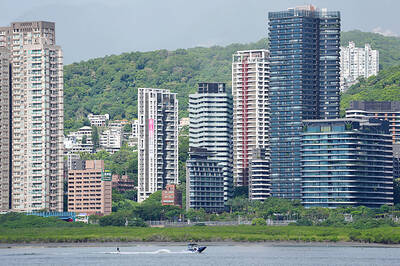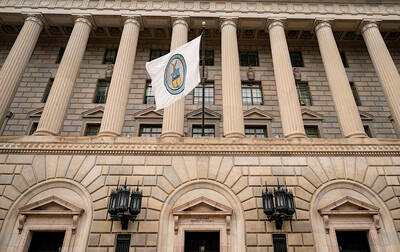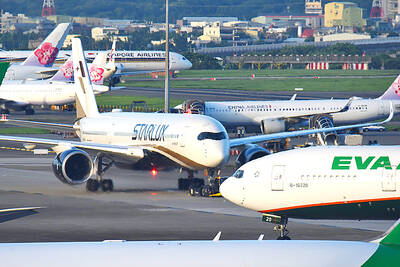From cancer-busting ultrasound techniques to ways to boost vitamins in tomatoes, Dutch tech-hub Eindhoven’s avalanche of patents has just earned it the crown of “most inventive city in the world.”
Despite the Dutch economy hobbling through its third recession since 2009, this southern city of about 750,000 has become a beacon of high-tech hope and is even compared to Silicon Valley in the US.
With 22.6 patents filed for every 10,000 residents, Forbes magazine this month named Eindhoven the world’s most inventive city.
Using a commonly used metric for mapping innovation called “patent intensity,” Forbes based its award on statistics from the Organisation for Economic Co-Operation and Development (OECD).
In 2011, 3,238 patent applications were filed in the Netherlands, according to the EU’s statistics office, Eurostat. Of these, the Eindhoven region, and in particular, its research and development hub, the High Tech Campus (HTC), accounted for 42 percent.
On the “smartest square kilometer in the Netherlands,” you will not find students at the sprawling HTC complex on Eindhoven’s outskirts.
Once a closed-off laboratory for Dutch electronics giant Philips, the campus houses more than 100 companies employing 8,000 researchers, developers and engineers.
“Here, every 20 minutes, a patent is created,” the HTC boasts on its Web site.
The sprawling complex with its ultra-modern glass-facaded buildings is set among green fields populated by leisurely grazing cows.
The HTC is at the heart of Eindhoven’s innovation and provides a space where big companies, such as Philips, collaborate with small startups.
Philips opened the facility in 2003, when the company had just gone through a round of layoffs. It offered former employees somewhere to launch startups and use their knowledge.
The result was an explosion of innovation.
“The idea [of the HTC] is based on a philosophy of ‘open innovation’ where high-tech businesses share knowledge ... to deliver better and quicker results,” said Jean-Paul van Oijen, sales manager at Brainport Development, whose job it is to stimulate investment in the Eindhoven region.
For a small startup like Miortech, which makes electronic tiles that deflect sunlight just like paper — seen as the next big thing in billboard displays — the campus is ideal.
“We have only five people on the payroll,” the company’s chief executive Hans Feil said.
The rest of the work is outsourced to scientists from other companies, while the facilities to do the research are rented from the HTC.
“We use shared facilities. It’s a very good spot to be. We are surrounded by people and companies with a similar mindset — high patent intensity,” Feil said.
The High Tech Campus forms part of the broader Brainport Region Eindhoven, or Brainport for short — an initiative that was rolled out by the Dutch government in 2004 to corral high-tech knowledge after not just Philips, but several other big companies laid off a swathe of highly skilled workers.
It works on a so-called “triple-helix concept” that brings together business, knowledge-based institutions and public money to create a space where enterprise can flourish, notching up about 60,000 new jobs in the region by 2011.
Together with the so-called Airport Amsterdam, which focuses business on the Schiphol International Airport hub and Seaport Rotterdam, Brainport today forms one of the three most important pillars of the Dutch economy.
Brainport contributed about 13.5 billion euros (US$17.8 billion) or 8 percent to Dutch exports in 2011 and aims by 2020 to be one of the top 10 technology regions in the world.
However, Henk Volberda of Erasmus University’s Rotterdam School of Management warns that more investment in small startup companies is needed if Eindhoven wants to remain competitive on a global level.
“We need to see ... less dependence on the big companies like Philips and ASML [the leading lithograph maker used to manufacture computer chips],” Volberda said.
Last year already saw a 10 percent drop in patents filed by the Netherlands at the Hague-based European Patent Office, partly down to a drop in applications from Philips as it streamlines activities.
Currently, the Netherlands is ranked fourth in the world in this year’s Global Innovation Index report, ahead of the US, Finland, Germany and Japan.
Switzerland, home to a plethora of pharmaceutical multinationals, claimed the top spot for the third year running, in the report, released by Cornell University, the INSEAD business school and the World Intellectual Property Organization.
However, the Dutch ranking could be jeopardized if the delicate balance between public and private money, always difficult to maintain in times of economic downturn, is threatened.

Taiwan’s rapidly aging population is fueling a sharp increase in homes occupied solely by elderly people, a trend that is reshaping the nation’s housing market and social fabric, real-estate brokers said yesterday. About 850,000 residences were occupied by elderly people in the first quarter, including 655,000 that housed only one resident, the Ministry of the Interior said. The figures have nearly doubled from a decade earlier, Great Home Realty Co (大家房屋) said, as people aged 65 and older now make up 20.8 percent of the population. “The so-called silver tsunami represents more than just a demographic shift — it could fundamentally redefine the

The US government on Wednesday sanctioned more than two dozen companies in China, Turkey and the United Arab Emirates, including offshoots of a US chip firm, accusing the businesses of providing illicit support to Iran’s military or proxies. The US Department of Commerce included two subsidiaries of US-based chip distributor Arrow Electronics Inc (艾睿電子) on its so-called entity list published on the federal register for facilitating purchases by Iran’s proxies of US tech. Arrow spokesman John Hourigan said that the subsidiaries have been operating in full compliance with US export control regulations and his company is discussing with the US Bureau of

Businesses across the global semiconductor supply chain are bracing themselves for disruptions from an escalating trade war, after China imposed curbs on rare earth mineral exports and the US responded with additional tariffs and restrictions on software sales to the Asian nation. China’s restrictions, the most targeted move yet to limit supplies of rare earth materials, represent the first major attempt by Beijing to exercise long-arm jurisdiction over foreign companies to target the semiconductor industry, threatening to stall the chips powering the artificial intelligence (AI) boom. They prompted US President Donald Trump on Friday to announce that he would impose an additional

China Airlines Ltd (CAL, 中華航空) said it expects peak season effects in the fourth quarter to continue to boost demand for passenger flights and cargo services, after reporting its second-highest-ever September sales on Monday. The carrier said it posted NT$15.88 billion (US$517 million) in consolidated sales last month, trailing only September last year’s NT$16.01 billion. Last month, CAL generated NT$8.77 billion from its passenger flights and NT$5.37 billion from cargo services, it said. In the first nine months of this year, the carrier posted NT$154.93 billion in cumulative sales, up 2.62 percent from a year earlier, marking the second-highest level for the January-September